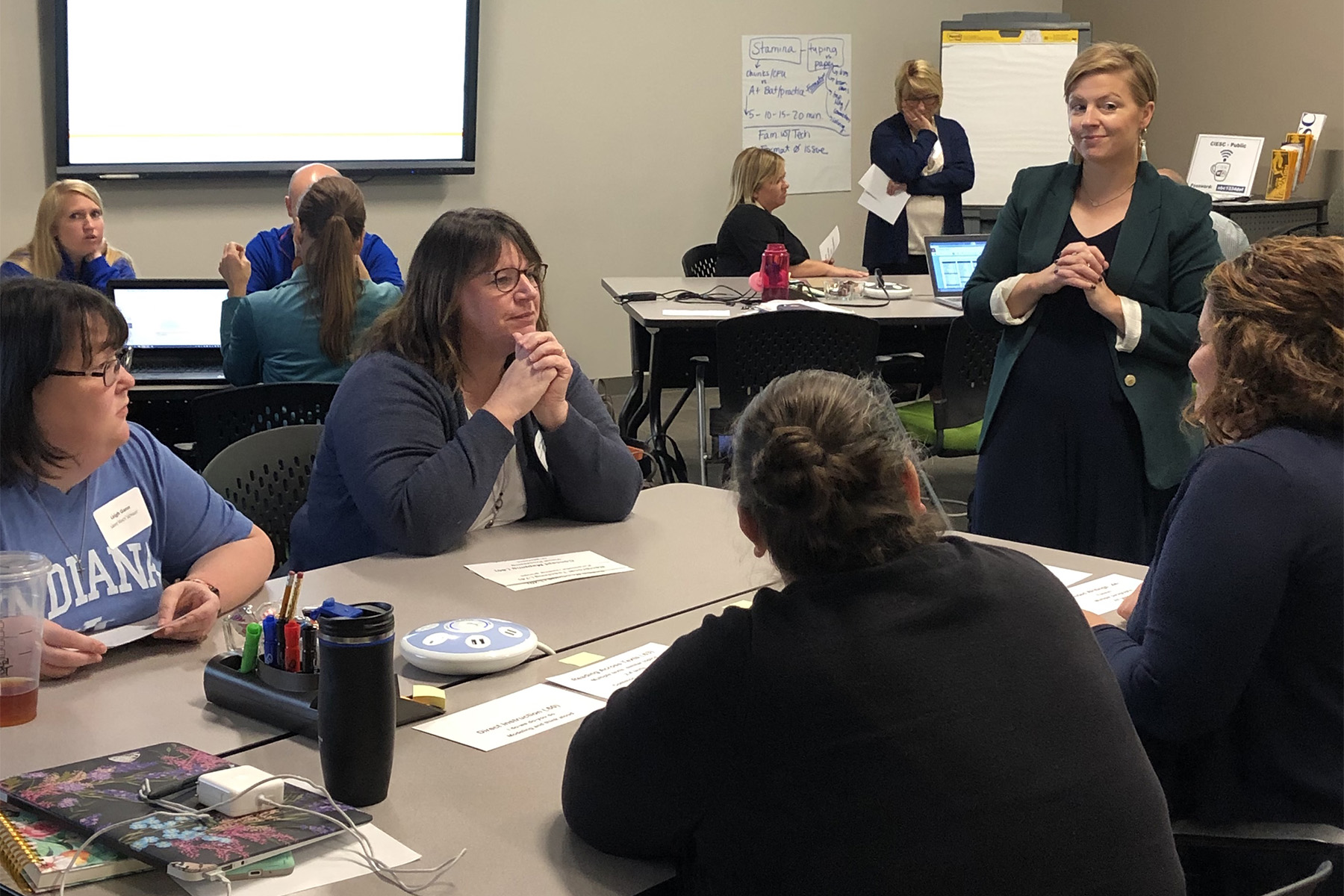If there’s one overarching request from teachers, it’s the plea for more clarity. Specifically, they are desperate for building and district leaders to communicate vital information and initiative implementation. It’s far too easy for one message to yield ten interpretations overnight. The need for clarity of vision, accountability for deadlines, and defined expectations are paramount. When one expectation morphs into multiple interpretations, disorganization, frustration, and doubt begin to grow. How do you ensure there is clarity for your districts? Keep your initiatives to a minimum. In fact, I encourage you to stop using the word initiative altogether. An initiative, by definition, creates a culture where teachers believe school and district leaders dole out new professional development focus areas each year. This “flavor-of-the-month” mentality is dangerous and destructive in school cultures. It’s the leaders’ responsibilities to simplify, simplify, simplify. Instead of using the word initiative, create a narrowed, clarified list three to four goals. Why such a small number? Because it’s your job to assure your teachers that these goals are:
- Important
- Attainable
- The heart of your vision
Teachers are notorious for following through and meeting expectations—but how can they be expected to complete objectives that are unclear, muddied, and confusing? Create a short, narrowed list of goals and then repeat them year after year. This is called purposeful redundancy, and our teachers need (and want) this.
Focus on Instruction
If you’re only going to have three to four goals in a corporation or school, then it’s best to focus these goals around instructional impact on learning. Teachers want to know that their professional learning makes an impact in their classrooms, and the best way to measure this impact is by looking at the learning of the students. Gone are the days of, “I taught it, they should have learned it.” Teachers must fully embrace their power to influence students, and building leaders must relentlessly protect teacher meeting time. Teachers are some of the best learners in our society, so let’s continually clarify their need to grow as instructional leaders. If we provide time for teachers to meet and share strategies in PLCs, but then frequently schedule other to-do items during PLC time, then we are sending the message that teacher learning time is unimportant. For teachers to grow in this profession, they must center their conversations around student learning and growth outcomes. If you meet in a group but cannot explain how your meeting has impacted student learning—you are not, in fact, having a PLC conversation.
Structured Systems
Creating common systems across your building and district is another necessary step to creating the clarity teachers are seeking. But, simply creating the system without frequent inspection of the process does not ensure expectations are being met. I guarantee there are systems in place in schools that most teachers are completely unaware of. Principals and district leaders know they exist—and they believe the teachers know they exist—but trust me, this is a myth. How do you know if your teachers know the systems and protocols of your district? Ask! Ask and ask and ask. There’s a difference between micro-managing your staff and keeping a pulse on what’s actually happening out there. Why is it so important that schools at the same level (i.e. elementary schools or multiple secondary schools) follow similar processes and systems? Because this creates clarity in your district! When teachers in all buildings know what’s expected, there is unity in the implementation of the vision. And that’s the ultimate goal. That’s why we have one vision in a district, instead of one for every building.
Coaching
How do you ensure that these narrowed instructional goals are carried out within the clarified systems? Consistent expectations and conversations with your teacher leaders, coaches, assistant principals, and principals. Clarified vision conversations with new hires as well as new students. Regular check-in meetings where coaches across your district meet in PLCs or principals meet to create the unified, aligned goals. Administrators and coaches are responsible for staying on the same page and then helping their teachers remain on that page, too. The instructional leadership team needs to have its own in-depth conversations about how to interpret expectations around learning. You need to make sure everyone is speaking the same language. You cannot merely assume they are, especially if you’re discussing goals (aka initiatives) that have been around for several years. District and building leaders cannot, I repeat—cannot—afford to assume clarity exists. You must rely on proof that your teachers are all on the same page.
The Proof is in the Pudding
As much as possible, plan district-wide professional development opportunities. This way, your entire 3rd grade-team can come back and have rich conversation about what to use or not use from that experience. As the leader, you can then hear the conversations and clarify misconceptions. Similarly to what our teachers do with their students. During PLC or team meetings, sit in! Listen to the conversations and take note of what teachers are saying or not saying in regard to the goals. If you’re a principal, meet with other district principals to corroborate feedback. Are you all hearing similar conversations in your buildings around the goal, or are different interpretations beginning to develop in the district? As a district leader, regularly meet with your building and teacher leaders to hear what is happening. Again, this is not micro-managing; it’s listening. Your job is to ask and listen; to have an accurate pulse of the understanding of the vision in the district, and then, to create opportunities for purposeful redundancy. Reiterating the goal is one of your top responsibilities as the leader—and your teachers are waiting for you to do so.



